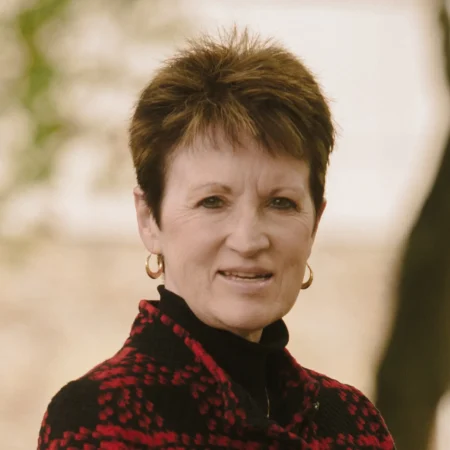I’m sure you already know the difference between a first-person narrator and a third-person narrator. A first-person narrator is a character in the story that he or she is telling (like Huck Finn, Scout Finch, or even Dr. Watson, who is not the main character in the Sherlock Holmes stories, but who is a character nevertheless). A third-person narrator is a disembodied voice who does not participate in the action of a story (like the narrator of Pride and Prejudice: “‘It is a truth universally acknowledged, that a single man in possession of a good fortune, must be in want of a wife.”)
You probably also know the difference between a third-person omniscient narrator and a third-person limited narrator. An omniscient narrator, like any other omniscient being, knows all, sees all, is not limited by space, and can tell what is going on inside any character’s head. The narrator of The Chronicles of Narnia is omniscient. This narrator can eavesdrop on any character’s thoughts, can move freely between England and Narnia, and often zooms all the way out to give big-picture explanation, summary, commentary, etc. A third-person limited narrator, on the other hand, doesn’t have as much freedom. Most of Flannery O’Connor’s are in third-person limited. In her story “Revelation,” for instance, we can only see what Ruby Turpin sees, and whereas we can eavesdrop on Ruby’s thoughts directly, we only know what other characters are thinking based on what Ruby can see them do or hear them say.
You probably learned these distinctions in your junior-high English class. But there’s another distinction in narration styles that doesn’t get talked about nearly as often, but is just as important. That is the difference between distant narration and close narration. The same narrator, whether first-person, third-person omniscient, or third-person limited, will sometimes employ distant narration and sometimes close narration, depending on the situation.
In distant narration, the narrator pulls all the way out of a scene to provide explanation, summary, commentary, background, etc. The distant narrator provides the big picture. In close narration, the narrator zooms in to let the reader experience more closely what the point-of-view character experiences.
This concept is easier to show by example than by definition. The narrator of The Lion, the Witch and the Wardrobe is a third-person omniscient narrator. Often that narrator soars high above the story and gives the reader a distant bird’s-eye view, as in the opening few sentences:
Once there were four children whose names were Peter, Susan, Edmund and Lucy. This story is about something that happened to them when they were sent away from London during the war because of the air-raids. They were sent to the house of an 0ld Professor who lived in the heart of the country, ten miles away from the nearest post office.
This is all summary, all big-picture. We aren’t invited to inhabit a scene; we don’t feel as if we’re in the same room with the four children or the Professor. But we are given a lot of important information in a very small space; that’s what distant narration is for.
Don’t associate distant narration with the omniscient narrator. A first-person narrator can just as easily pull out of scene to give this kind of overview/summary/explanation. Scout Finch, the first-person narrator of To Kill a Mockingbird, starts out in exposition/explanation mode and doesn’t zoom into a scene for four or five pages. As the book goes on, she frequently zooms out for a few pages of distant narration.
To return to The Lion, the Witch and the Wardrobe, on the second page our narrator pulls in a little closer and brings us into the room with the Pevensie children:
As soon as they had said good night to the Professor and gone upstairs on the first night, the boys came into the girls’ room and they all talked it over.
“We’ve fallen on our feet and no mistake,” said Peter. “This is going to be perfectly splendid. That old chap will let us do anything we like.
“I think he’s an old dear,” said Susan.
Can you see how this narration is “closer” than those opening lines of the book? We are in the girls’ upstairs room, seeing and hearing what we would see if we were actually there. This is showing, not telling. But I wouldn’t call this “close” narration, because this is a pretty neutral account of what is happening and doesn’t give us a close look at what any one of the characters is experiencing. This middle-ground narration, between distant and true close narration, is the workhorse of storytelling. Whether your narrator is first-person or third-person, omniscient or limited, it’s crucial that you develop the skill of showing the action in sensory terms, as if you were a video camera.
Having moved from distant narration at the beginning of the first chapter to this middle-ground narration in the middle of the chapter, at the end of the chapter our narrator pulls in as close as possible to the experience of Lucy as she goes into the wardrobe for the first time. Watch how this works:
It was almost quite dark in there and she kept her arms stretched out in front of her so as not to bump her face into the back of the wardrobe. She took a step further in—then two or three steps—always expecting to feel woodwork against the tips of her fingers. But she could not feel it.
“This must be a simply enormous wardrobe,” thought Lucy, going still further in and pushing the soft folds of the coats aside to make room for her. Then she noticed that there was something crunching under her feet. “I wonder is that more moth-balls?” she thought, stooping down to feel it with her hand. But instead of feeling the hard, smooth wood of the floor of the wardrobe, she felt something soft and powdery and extremely cold. “This is very queer,” she said, and went on a step or two further.
If you know this story, you know that Lucy is no longer inside the wardrobe, but rather has gone through the wardrobe and into Narnia. And there are no mothballs underfoot, only snow. But if you didn’t already know this story, think how disorienting this moment would be. You would be just as confused and curious as Lucy. You only get as much information as Lucy does. More than that, you are provided with Lucy’s misinterpretation of what is happening. (“This must be a simply enormous wardrobe.” “I wonder is that more moth-balls?”)
Remember, our narrator is omniscient. Our narrator has already demonstrated a willingness to explain and interpret (as we saw in the opening lines of the book). Our narrator knows exactly what is going on here. But instead of giving us the big-picture, the narrator has zoomed in for a moment of very close narration that allows us to experience the same confusion that Lucy experiences.
The choice of narrator (first-person, third-person omniscient, third-person limited) is a choice the storyteller makes once per story. But the choice to use distant or close narration, or something in between, is a choice the storyteller makes every scene.
If you want to learn more about close narration, here’s a five-minute clip from Lecture 1 of my upcoming Writing Through the Wardrobe class. If you want to watch my whole 35-minute lecture on Narration and Point of View, you can watch that here. Either video would give you a good idea of what you can expect from Writing Through the Wardrobe.








